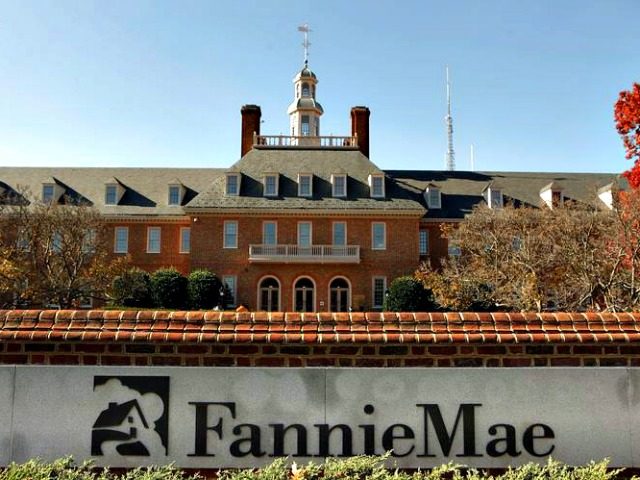Investors in Fannie Mae and Freddie Mac won a legal skirmish in their long-running battle against the U.S. government’s claim to nearly all of the mortgage-finance giants’ profits, but the ruling could jeopardize the Trump administration’s plans to recapitalize the companies and eventually release them from government control.
The Fifth Circuit Court of Appeals on Friday overturned a ruling that supported the 2012 agreement that required the companies to pay dividends equal to their positive net worth as a dividend to the Treasury Department. While the court declined to set aside the net worth sweep, it sharply criticized the arrangement and said investors can pursue their claims at a trial court.
The en banc panel of the Fifth Circuit also said the structure of the companies’ regulator, the Federal Housing Finance Agency, is unconstitutional because its single director cannot be removed by the U.S. president except “for cause.” The court’s remedy is to allow the director to be fired at will by the president.
That was only part of what plaintiff investors had sought in their challenge to the FHFA’s structure. They had also asked the court to strike down the 2012 agreement amending the terms of their bailout because it was agreed to by an unconstitutionally independent director. A majority of the judges, however, said that the remedy for the unconstitutional structure should only apply prospectively, meaning it would not invalidate past actions by the agency.
As a result, the tenure of the current director, Mark Calabria, is now unclear and likely dependent on the outcome of the 2020 elections. It is highly unlikely that a Democratic president would allow Calabria, a long-time Republican aide and recently the economic adviser to Vice President Mike Pence, to serve out the remainder of his five-year term.
That uncertainty could make it harder for the Trump administration to pursue its plans to recapitalize the companies and release them for their now 11-years long conservatorship. The day before the ruling, the Treasury Department released a report describing the plans in broad terms. For all practical purposes, the uncertainty about who will head the FHFA after 2020 foreclose’s any chance that public financial markets could be tapped as part of that plan.
Several leading Democrat politicians, including Elizabeth Warren, have already objected to parts of the Trump administration’s outline on the grounds that it could raise borrowing costs for low-income Americans or those with less-than-stellar credit.
Shares of the two companies soared on Monday. Fannie shares rose 34 percent to more than $3.60. Freddie shares jumped by a similar amount to $3.44.
Government lawyers spent the weekend contemplating their next move. This could include an attempt to challenge the appeals court’s ruling at the Supreme Court level or to fight at the trial level.
The legal victory was significant because it was the first for Fannie and Freddie investors after set-backs in several other federal courts. The earlier decisions typically held that the statute authorizing the bailout and seizure of Fannie and Freddie also blocked federal courts from intervening in the deal.
Under the original terms of their bailout, Fannie and Freddie promised to pay an annual dividend equal to 10 percent of the rescue funds they received from the U.S. Treasury, which eventually amounted $187 billion, plus an annual commitment fee on the remaining amount Treasury had pledged to support them. When profits fell short of the amount necessary to pay the dividend, the companies drew additional amounts from the Treasury. The commitment fee was never paid and its amount was never set as Treasury waived it each year in light of the financial difficulties of the companies.
The deal was changed in 2012 by an agreement between Treasury and the FHFA, which was acting on behalf of the companies as their conservator. Under the new deal, the commitment fee was permanently suspended the government agreed to collect nothing in years when the companies lost money, leading at least one GOP lawmaker to argue the deal amount to a second bailout. In exchange, the companies agreed to pay all of their profits to the Treasury in good years.
When the companies returned to profitability, writing up tax-losses that had been written-off during the financial crisis, their payments to the government soared much higher than would have been required under the 10 percent dividend. Later, as profitability leveled off, the annual dividend sank below the 10 percent figure.
Last year, Fannie Mae paid $9.4 billion in dividends to Treasury, 7.8 percent of the $119.8 billion of aid it has received. In total it has paid $175.8 billion since it was bailed out in 2008.
Fannie and Freddie do not lend money to home buyers. They buy loans from lenders, bundle them as securities to be sold to investors, and guarantee payments on those securities. The companies were originally created by the federal government to provide liquidity to the home financing market, later sold to investors, and operated for years under an implicit guarantee from the government. This unusual situation lowered their costs of funds, artificially inflating their profitability, and encouraged risk-taking.
In 2008, both companies agreed to be taken over by the U.S. government as they teetered on the brink of collapse due to losses on risky mortgages, insufficient capital, and the mounting loss of investor confidence in their financial health. The Treasury Department provided hundreds of billions of dollars of support while the FHFA replaced their boards and management. The Federal Reserve also supported the companies by becoming the largest buyer of the securities they bundled.
The case is Collins v. Mnuchin, 17-20364.

COMMENTS
Please let us know if you're having issues with commenting.